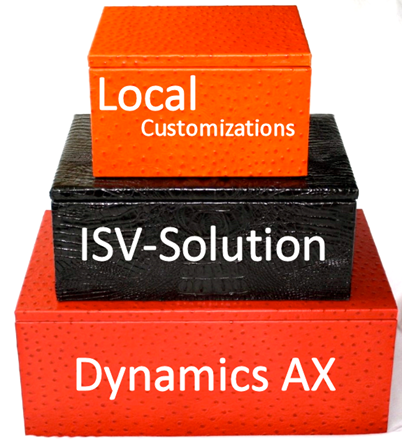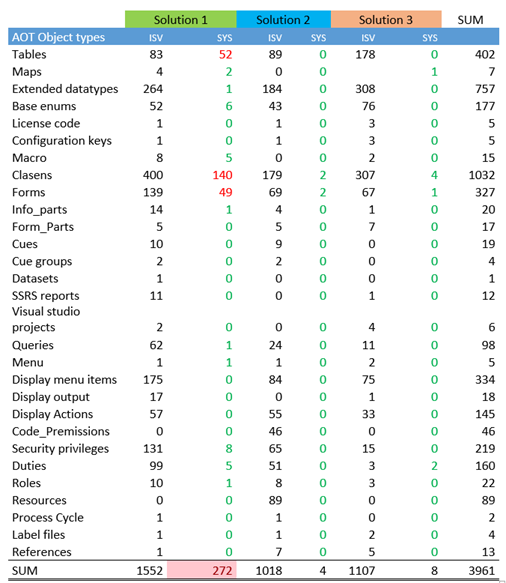
|
|
#1 |
|
Участник
|
kurthatlevik: How to evaluate Dynamics AX ISV solutions
Источник: https://kurthatlevik.wordpress.com/2...isv-solutions/
============== Dynamics AX 2012 R3 have truly evolved into an enterprise solution, and the functional width solves most requirements that any customer “really need”. But there is always the 80% / 20% rule that applies and there are requirements that is not solved by the standard Dynamics AX. We often see extended domain specific requirements in relation to finance, sales, procurement, logistics and production. To solve this, customers have the option to create customizations or to try to find VAR/ISV solutions that solves this. (VAR= Value Added Reseller. ISV =Independent software vendor) Creating your own large customizations can result in high risks, and the option to buy a “ready to use” ISV solution then becomes interesting.  What I wanted to give to the Dynamics Community is my list of how I evaluate ISV-solutions as a VAR. I basically just use a word document with a set of chapters, and the topics to evaluate here is from a consulting perspective. The idea is to have a formalized way of making evaluations, and also use the ISV/representatives to fill in the information for you. 1. Executive summary {Yup. There is always someone to report to. } 2. Product Introduction {Then I write a brief introduction to the product, describing the overall area that it solves.} 3. Background for evaluation {Here I write why this product was evaluated in the first place.} 4. Vendor/Distributor information – general {Then I record some general information about the company that offers the solution. Just to be sure that the company behind the solution will exists in the future. The following table can be used} Comments Company name CEO Sales manager Turnover 2014 Results 2014 Number of employees Number of customers Number of references 5. Vendor/Distributor information – product {The ISV-“mothership” may be large, but it is interesting also to check out the team that is organized around the product. I therefore have a secondary evaluation around the team developing and maintaining the ISV solution} Comments Product manager Product turnover Number of customers Number of developers 100% dedicated Part time dedicated Number of consultants 100% dedicated Part time dedicated Support resources/routines 6. Pricing {Describing product pricing, enhancement and also flexibility. Also include a case study with implementation. } 7. Marked/Cost savings potential { Describing the current marked potential, also reflect according to existing customer base. I also use a calculation sheet to show investment, potential, margins, number of sales each year, training costs, start up issues etc} 8. Known Competitors {Describing any known competitors to the ISV solution and what the main advances this product have.} 9. Versions and language {Describing supported versions and language of Dynamics AX. I also want to record how support is handled as new versions and upgrades go along} 10. Access to software {Describing how the product is accessible from the ISV and how it is distributed} 11. Technical Installation guide {Describing the quality of the installation guide, and I also try the installation to check how easy it is} 12. Application setup guide {Describe the quality of the application guide, and I also try the application to check that it actually work} 13. Scenario testing {In this chapter, we will test the different functional aspects of the product. The processes that is tested is the most common scenarios that we expect and have experienced in the field. Normally divided into a section per feature.} 14. Solution footprint {The solution footprint is very important to evaluate, because this tells us how costly upgrades and applying hotfixes will be. We want to see high/low footprint on SYS elements for Dynamics AX. A way to easily evaluate this, is to count the number of SYS overlaying’s that exists and how many new elements that have been introduced. I therefore use a table like this}  {If there is a high number of ISV objects customized, I know that cumulative updates from Microsoft will be more costly.} 15. Best practice deviations {To evaluate the coding quality, then evaluating all best practice deviations that can be found. Dynamics AX have building tools for this, and if there is a high amount is BP errors and warnings, it means that the code quality it not where it should be. }  Also get any documentation if the product have a CfMD certification (Certified for Microsoft Dynamics)  16. Support and training {Describe how the product is supported from the vendor. There will always be questions and issues, so we need to know how this is handled. Often ISV solutions are purchased from VAR’s, and then it is good to know how this financially is handled. Also if there are any training included in the offering.} 17. Internal requirements {Describe needed competence and needed training needed internally to implement, deliver and use this ISV-solution. } 18. Road map {Show what plans there are for the product, what their priorities, what are their policies around upgrades, etc} 19. Marketing {If you are a VAR, that want’s to include a ISV solution offering, it is important to understand how the ISV will support you in promoting the solution. Show what marketing material the ISV have and how you can use it. Do they have marketing insight they in the local market. Also find out how the ISV will support and drive market campaigns, participate in events, demos, etc with people and or marketing funds (money)} ISV solutions play a big role in unlocking all of the possibilities that Dynamics harnesses. When analyzing your Dynamics ERP investment, it’s imperative that you also analyze your ISVs so that you can make the best decision for your business, both in the short and long-term. These topics will lead you toward making better evaluations while looking for an ISV solution. Feel free to use them, and extend them when needed. </p> Источник: https://kurthatlevik.wordpress.com/2...isv-solutions/
__________________
Расскажите о новых и интересных блогах по Microsoft Dynamics, напишите личное сообщение администратору. |
|
|
|
|
| Опции темы | Поиск в этой теме |
| Опции просмотра | |
|